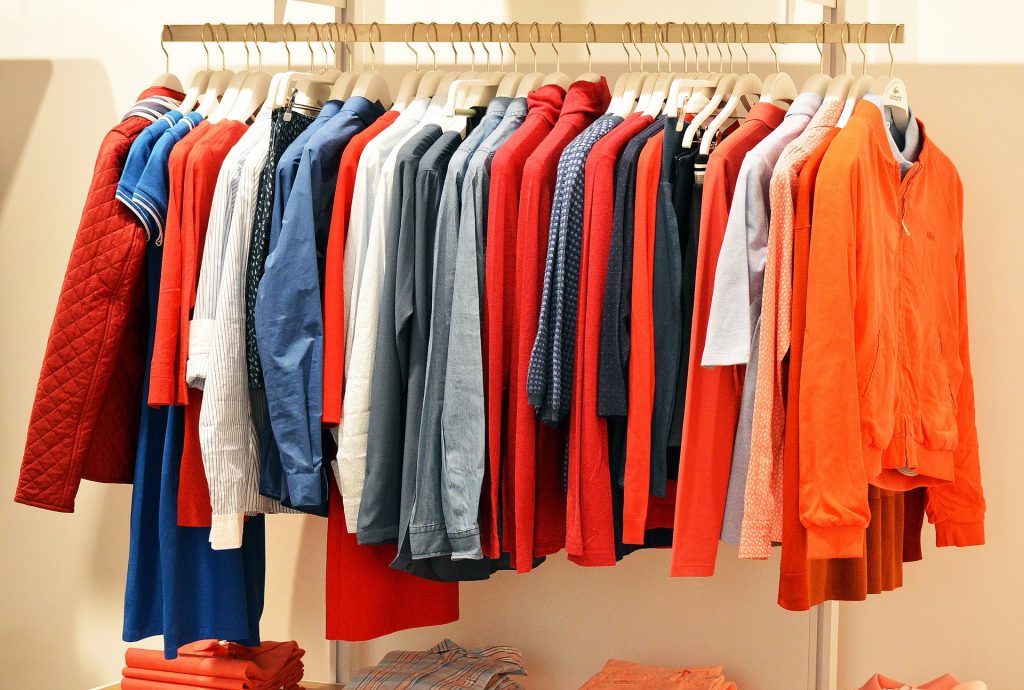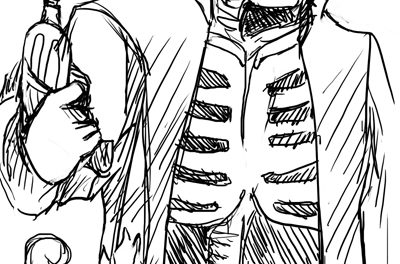
(Pixabay/islandworks)
Balenciaga’s Fall and Winter 2022 fashion show briefly sparked controversy when a model appeared on the runway donning a $1,790 trash bag. But although that stunt’s wastefulness was unusually blatant, it’s nothing new for the world of luxury fashion. Luxury fashion brands are known for their gaudy, mercurial trends. Furthermore, fast fashion conglomerates such as Zara, Fashion Nova and Shein have begun to cheaply mimic these trends at a new level of wastefulness.
Both luxury and fast fashion brands are guilty of feeding into cycles of trends that prioritize profit margins at great human and environmental cost. The emissions released during production and fuel needed to transport the products yield an exorbitant environmental cost for clothes that we often use once or twice, if at all. A study by the University of Arizona finds that fast fashion is the second most environmentally harmful industry, contributing 10% of total carbon emissions and 20% of global wastewater. In addition to pollution, the U.S. also shunts 11.3 million tons of clothing waste per year, much of which was fast fashion purchased in pursuance of trends set by luxury fashion.
Clothing collections are traditionally released at the start of each season, but this pattern has decreased significantly with the introduction of e-commerce stores like PrettyLittleThing and H&M. Zara has been reported to release 24 collections per year, and H&M follows close behind with 16. These new “micro-seasons” have spawned microtrends, typically inspired by prominent luxury brand items and popularized through internet crazes that are desperate to sport the newest look. The surge in internet microtrends pushes users to cycle through aesthetics as quickly as possible, leading to the creation of “Tik Tok Trend Trackers” that report on the newest trend cycle. Countless trends have gone wild on TikTok, from Y2K, the coquette aesthetic, dark academia, cottage-core and most recently, the “clean-girl” aesthetic. All of these trends have piled up in landfills almost as quickly as the aesthetics have appeared online.
The human costs of maintaining fast fashion companies’ takeover of the fashion industry are high, including workers’ rights abuses and exploitative labor practices. Shein workers are forced to work 18-hour days for 7 days a week, with only one day off each month. A single mistake in these Chinese factories can mean a fine of up to two-thirds of a worker’s daily wage, which Shein admitted violated their company’s Code of Conduct. At one factory, workers are paid just four cents for every item they produce. This exploitation lets Shein churn out massive volumes of clothing; an investigation by The Public Eye has found that Shein lists almost 10,000 items on its website daily. Instead of valuing human lives, fast fashion companies continue with their downright abusive practices – doing anything to churn through trends and keep customers buying.
Sooner or later, every item of clothing ends up in either a thrift store or landfill. The pace at which mainstream clothes are outcompeted by the trend cycle and then disposed of almost as quickly as they are bought is appalling. Companies like H&M, American Eagle, and Shein have tried to address climate concerns. In particular, Shein recently launched their resale platform, Shein Exchange. However, the rapidity of microtrends may render the exchange platform useless if Shein does not pull back on how much inventory they produce, which can be up to 100 items for each one of their 600,000 products on their storefront.
While Shein’s negative impact is undeniable, it is important to hold other companies accountable as well. The fast fashion lineup includes Wish, Fashion Nova, H&M, Zara, Forever 21 and Boohoo, among others. While sources like news articles, environmental organizations, and even TikTok can expose undercover fast fashion brands, customers should not rely on these sources to tell them when a brand is unethical.The best way to avoid harmful consumption is by learning the telltale signs of fast fashion. Unbelievably low prices, a huge number of offerings, quick turnover in product availability, lack of business transparency and cheap fabrics should all tip consumers off that the company is likely an exploitative fast fashion machine.
Fast fashion is littered with unethical practices, but the luxury brands that inspire their products are no less guilty of promoting overconsumption and harming the environment. For example, between 2013 and 2018, Burberry burned 28.6 million dollars’ worth of unwanted products to avoid selling them cheaply, force scarcity and maintain a veneer of prestige. After backlash from the public, Burberry ceased this practice. Unfortunately, this is also common among brands including Chanel and Louis Vuitton. High-end brands should be held accountable, as Burberry was, for their unethical practices and alternatives to their business models should be explored.
Corporations deserve criticism, both through social media advocacy and through legislative initiatives. Many countries are dealing with fashion ethics through their own legislation, such as France, where companies will be required to include the specific climate impact of each article of clothing on its label, the details of which are to be determined by the French government.
However, solutions to these problems must also involve individual consumers. Companies supply products, but consumers provide and maintain the demand for the business model to succeed. While examples like the French legislation give hope for the future, we as fashion-conscious students should be accountable for engaging with the many concrete opportunities there are to fight back. For example, students can shop for used clothes on the online marketplace Thrifthouse. It is a great way to refresh a wardrobe without becoming complicit in fast fashion. At Emory University, the Clairmont Thrift Shop is a spot that allows students to donate and swap used clothes. For the creatively inclined, Crochet Emory also hosts workshops to learn how to make your own clothes.
Resisting the fast fashion industry’s exploitation doesn’t have to mean constant thrifting and sewing. Rather than reinventing our wardrobes every month, it’s time to destigmatize re-wearing clothes. This doesn’t have to be boring– pieces can be styled in countless ways and as part of different outfits. Additionally, instead of trying to keep up with trends, we can develop our own individual and signature styles. Turn this vicious cycle into a virtuous one — reuse, repurpose or buy sustainably, and the fast fashion industry will have one less person fueling its abuses.
Avenues for sustainable consumership allow leeway—while it is not the responsibility of individuals to halt climate change or human rights abuses, it is advisable not to ignore what we do have control over. Keep lawmakers accountable by supporting causes like the Center for Sustainable Fashion and focus on your individual impact. Whether by avoiding unethical brands like Shein, learning to sew, exploring new thrift spots in Atlanta or simply choosing to buy less, we can resist the exploitation of the fast fashion market and reclaim the liberty of intentional consumership that so many brands have denied us.
The above editorial represents the majority opinion of the Wheel’s Editorial Board. The Editorial Board is composed of Isabelle Bellott-McGrath, Rachel Broun, Evelyn Cho, Ellie Fivas, Marc Goedemans, Aayam Kc, Elyn Lee, Saanvi Nayar, Shruti Nemala, Nushrat Nur, Sara Perez, Ben Thomas and Kayla Robinson.
The Editorial Board is the official voice of the Emory Wheel and is editorially separate from the Wheel's board of editors.




